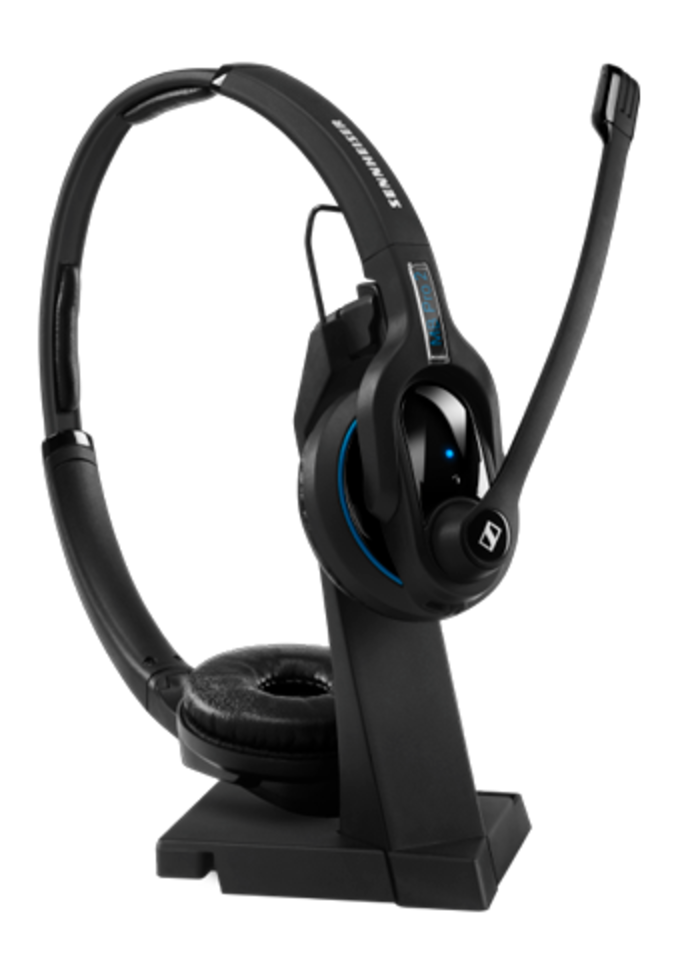Choosing the Right Headset: The Factors to Consider
Whether you handle many calls each day or just a few, a headset makes life in the office dramatically easier. A phone may have a comfortable handset with great audio, but it still lacks the hands-free advantage of a headset. Sennheiser offers many office & contact headset solutions, but how does one determine which model to pick? Before looking at models, it is best to consider a few factors that will help you narrow down the features you need in your headset solution. Our guide will help you – and your customers – with the beginning phase of choosing headset solutions.
Headset Consideration #1 – Type of User
Employees will need a headset that is compatible with their job function & daily telephone usage. Each office has desk employees, those who spend more than 90% of the day at a desk. These employees may be in functions such as accounting, marketing, finance, or administrative duties. Administrative staff, such as receptionists and assistants, will be phone heavy, while marketing and graphic design specialists may seldom answer calls.
Offices also have employees that frequently “roam.” These employees spend less than 80% of the day at a desk. Roamers are generally in roles such as sales, human resources, or IT. They’ll be on their feet enough to need a headset that is compatible with frequent moving. This includes making sure the headset is comfortable to use when walking and has the proper wireless range. For those who are always on the phone – whether at their desk or walking around the office – it is important to identify a solution with long talk time. Many Sennheiser office headsets have more than enough talk time for a full work day – without a recharge (8-12 hours of talk time).
There is also the employee that is in the field. This employee is rarely in the office and may not even have a physical desk in the workplace. They are either on the road or working remotely. Their headset needs to fit their extremely mobile (and possibly “deskless”) job.
Headset Consideration #2 – Device to Connect
What type of device is the headset going to connect to? Avoid a major headache by first identifying if users will be connecting headsets to a desk phone, softphone, mobile, or tablet.  This will eliminate setup struggles, avoid having to return headset equipment and will allow users to start making more efficient calls immediately.
This will eliminate setup struggles, avoid having to return headset equipment and will allow users to start making more efficient calls immediately.
Before committing to a particular Sennheiser headset, it is imperative to verify compatibility. Sennheiser makes it easy with their compatibility tool. Simply type in the name of a phone model, select the headset you are interested in, and then be provided with comments on compatibility. You’ll also be provided with what firmware to use, as well as connector suggestions.
Headset Consideration #3 – Monaural or Binaural
What is the difference? Well, monaural headsets consist of a single earpiece. These solutions are ideal for offices where you need to talk on the phone, but also listen to your surroundings. Users will essentially have the same experience they would when using a traditional handset; however, now they will be hands-free.
Binaural headsets consist of two earpieces. When using a binaural headset, all of the user’s attention will be focused on the call. The ear pads will block out that unwanted background noise, limiting any environmental distractions.
Headset Consideration #4 – Office Noise Level
Choosing the right headset is greatly dependent on determining the noise level in your office environment. This is especially true for any user that is in an open office environment, such as a call center. For offices with high levels of background noise, opt for a solution with efficient and effective noise cancellation. Also, provide these employees with binaural headsets that are lightweight and comfortable.
For ultra-noisy offices or offices where desks are close to one another (open concept offices or cube farms), it may be hard for listeners on the other end to hear employees. Find an option that solves this issue with an ultra noise-cancelling microphone and/or voice clarity feature.
Headset Consideration #5 – Some Other Things…
Pleasing end users is crucial when implementing a new headset solution in any office. A few other things to think about, which may be employee-specific are:
√ Hearing Sensitivity: For employees with hearing problems or who experience pain when on the phone for long periods, identify a headset that addresses this. Sennheiser’s Activegard technology is designed to prevent acoustic injury.
√ Skype for Business (SFB) Compatibility: For SFB users, make sure their headset is compatible. Models like the SD Pro 2 ML will work with desk phones and SFB.
√ Wear Preferences: How do you employees prefer to wear their headsets? Wear varies, with some models offering an ear hook and/or headband. Other models can also work with an optional neckband attachment.
Next Steps…
By taking these important factors into consideration, it will be easy for you to decide what headset solutions you are searching for. Now it is time to work with 888VoIP to determine the proper Sennheiser model for you. The sales team at 888VoIP can delve into the Sennheiser Product Portal with you to look at different Sennheiser options for your customers and their end users. Give the team a call at 888-864-7786 now.

